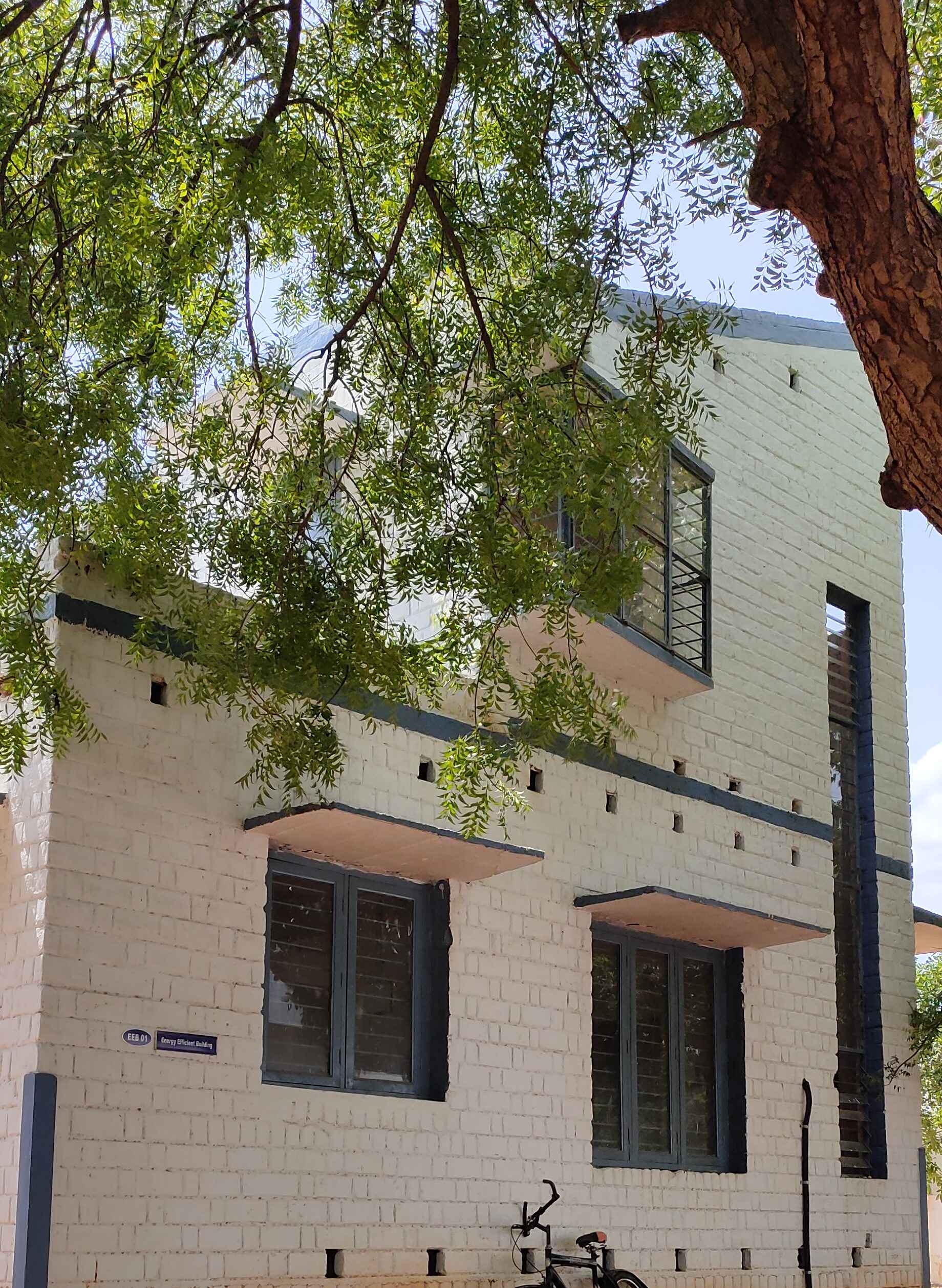Energy Efficient Building

Energy Efficient building was constructed in the year of 2001 under the Department of Energy and Environment as a model building. It allows the passive building principles that gives the best path to achieve Net carbon negative buildings by minimizing the electrical loads.
Proper window size, placement and proper glazing material are considered to achieve the Daylighting as well as Cross ventilation. In this building, Daylighting is achieved by mounting the glass bottles filled with water and fixed on the roof instead of concrete while the sunlight passes through it and illuminates on the floor or wall (Snell’s Law of Refraction and internal reflection) that makes internal space brighter. Cross ventilation maintaining air quality, besides facilitating air movement to enhance the thermal comfort.
Rat trap bond formation is the method of construction that was used in this building, where the bricks are used in such way that it creates the cavity within the wall, while maintaining the same wall thickness as for a conventional brick masonry wall. The air medium present inside the cavity helps maintaining a good thermal comfort inside the building. It also reduced material used for the building by one third, hence reducing the carbon foot prints of the building. The model building is as a whole: an economical, comfortable, energy efficiency and a sustainable one.
Key Features
- Daylighting
- Cross ventilation
- Rat trap bond formation construction
Faculty in Charge
Dr. M. Premalatha
Professor
Department of Energy and Environment
National Institute of Technology
Tiruchirappalli - 620015
Tamil Nadu, India
Email: latha@nitt.edu

